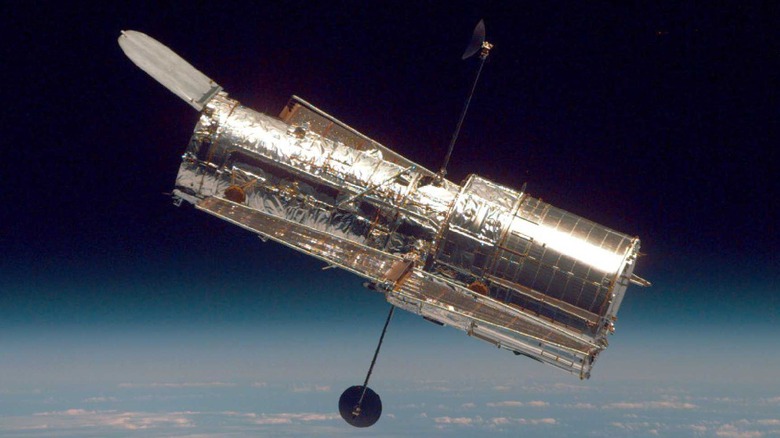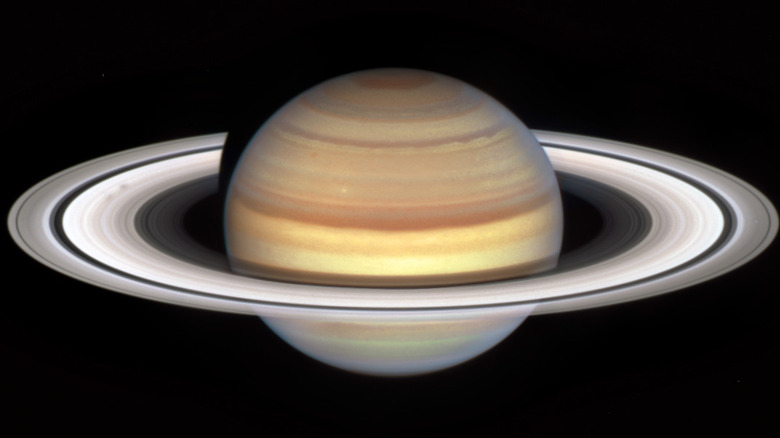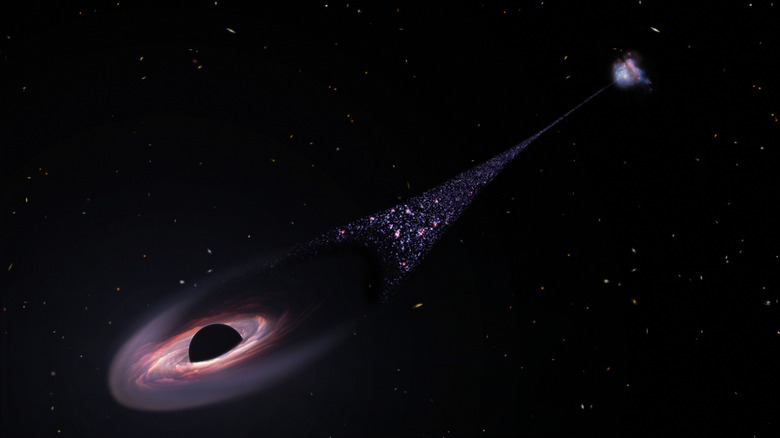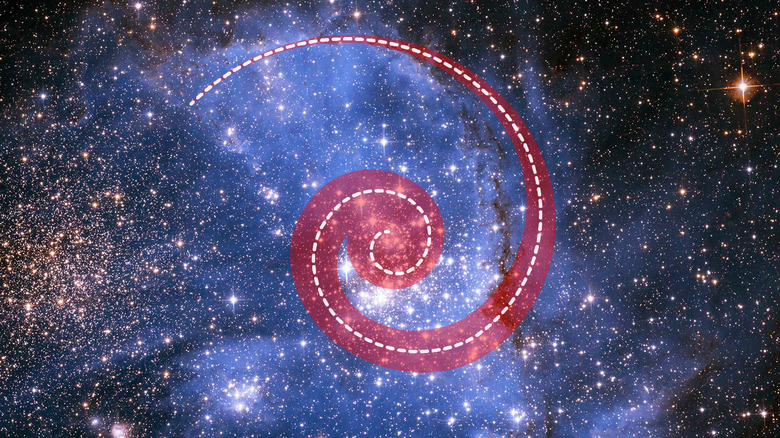Everything The Hubble Space Telescope Achieved In Its 33rd Year In Orbit
Since its launch in 1990, the Hubble Space Telescope has been one of the most valuable tools in astronomy, contributing to findings about everything from far-off exoplanets to the expansion of the universe. Even though the telescope is now getting on in years and has had to overcome various issues with hardware that has been in orbit for more than three decades, it continues to be an incredible source of scientific data and discovery.
From its position in low Earth orbit, Hubble is able to look out into space without having to peer through Earth's atmosphere. That allows it to see very dim and distant objects, as the water vapor in the atmosphere does not interfere with its readings. It uses two main camera instruments, the Advanced Camera for Surveys (ACS) and the Wide Field Camera 3 (WFC3), both of which are used alongside spectrographs to observe objects in the visible light wavelength, which allows Hubble to gather data on a wide range of targets.
According to NASA, Hubble has made more than 1.5 million observations in its lifetime and has contributed scientific data to more than 19,000 peer-reviewed papers. Data from the telescope continues to be used to make discoveries about planets in our solar system, exoplanets elsewhere in the galaxy, and even the nature of the universe itself.
NASA shared a video highlighting some of Hubble's discoveries in its 33rd year in orbit, showing just how much is still being learned thanks to this venerable telescope — here are its most significant recent observations.
Hubble's findings in our solar system
Hubble might be most famous among the public for its beautiful images, particularly of planets in our solar system. Saturn is one of the most beautiful planets thanks to its distinctive rings, and Hubble captured observations of a unique feature in these rings called spokes. These features, which look like dark smudges on the rings, appear at certain times of the season and are thought to be related to the planet's magnetic field. The spokes will become more noticeable as Saturn's northern hemisphere approaches its autumn equinox in 2025, giving astronomers the opportunity to study these features in more depth.
Another set of images from our solar system taken by Hubble was used to analyze the changing seasons on Uranus and Jupiter. Like Earth, other planets in our solar system also have seasons due to the tilt of their axis, with one hemisphere pointed more toward the sun and therefore being warmer. However, different planets have seasons that last for different amounts of time than the seasons on Earth because of the length of their orbits.
Hubble looked to Jupiter to see the storms that blow across its northern hemisphere, some of which form into a pattern of cyclones and anticyclones, which form a distinctive wavy band around the planet. Then, on Uranus, Hubble observed the seasonal effects of the planet's extreme tilt, as it is tipped over almost entirely on its side. Due to this tilt, parts of the planet go for decades without seeing sunlight, which affects the storms which are seen — particularly those around the planet's poles.
Looking out to exoplanets
Hubble is able to detect exoplanets by observing the stars around which they orbit. Even though planets are usually too small and too dim for Hubble to observe directly, researchers can infer the presence of planets by seeing dips in the brightness of a star. When a planet passes in front of its star, the light from that star dips by a small amount. Researchers look out for these dips and use them to determine the qualities of the planet.
Hubble used this method to observe two exoplanets, Kepler-138c and Kepler-138d, which we now know are likely water worlds. The planets seem to be composed primarily of water, based on their size and mass, making them potential ocean worlds that are unlike any planets in our solar system.
The telescope was used to make an even bigger finding by successfully measuring the mass of an isolated black hole. While most black holes live in a fixed location — such as the supermassive black holes found at the center of galaxies — some lonely wanderers can be found on their own. Hubble investigated one such isolated black hole located 5,000 light-years away and calculated that it has a mass between 1.6 and 4.4 times that of the Sun.
Another black hole investigation found that a trio of supermassive black holes had kicked out one of their members, sending the black hole rocketing out into space. The black hole left a trail of stars in its wake, which formed from the gas which was displaced by the path of the black hole.
And much more
These are just a few of the scientific discoveries Hubble was responsible for in its 33rd year. There was also the fact that Hubble observed the impact of the DART spacecraft, which deliberately crashed into an asteroid to deflect its path. That was a test of planetary defense to see what we could do if we ever spotted an asteroid heading for Earth, and Hubble was able to see the consequences of the impact to help understand what had happened.
Then there was the spiral of stars that Hubble spotted, which can help astronomers to learn about how stars and galaxies formed when the universe was young. For a finding that's just plain cool, there was the black hole Hubble saw devouring a nearby star, twisting it into a donut shape. Known as a tidal disruption event, this dramatic spectacle was observed using Hubble's ultraviolet sensitivity to help see what the star was made of.
Hubble is continuing to operate and is still producing more science every day, so keep an eye out for findings from its 34th year!



